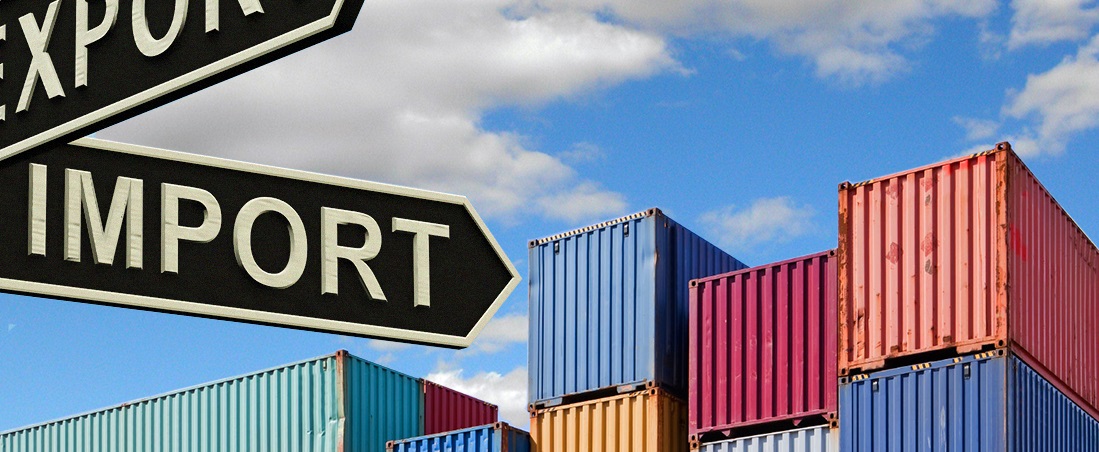
Trade flow exceeds US$ 11bn in the first week of March
Mar, 08, 2021 Posted by Ruth HollardWeek 202110
Data released on March 8 from SECEX (Foreign Trade Secretariat of the Ministry of Economy) point out that the foreign trade flow in Brazil rose 55.6%, by the daily average, and reached US$ 11.625 billion in the first week of March, The result is the sum of exports, which reached US$ 5.598 billion, and imports, which reached US$ 6.026 billion. Thus, the trade balance had a deficit of US $ 428 million in the period.
Compared to March 2020, also by the daily average, the data point to an increase of 34.3% in exports and an increase of 82.7% in imports, which implies an increase of 55.6% in the trade flow. In the accumulated result for the year, exports totaled US$ 36.73 billion, with an increase of 9.4%, and imports rose 21.3% and reached US$ 36.99 billion, resulting in a trade flow of US$ 73.72 billion and a trade balance deficit of US$ 261 million.
High exports
In exports, comparing the daily average of the first week of March 2021 (US$ 1.119 billion) with that of March 2020 (US$ 833.98 million), there was an increase of 34.3%, due to the increase in sales of the extractive industry (123.8%), agriculture and livestock (19%), and products from the manufacturing industry (9%).
In the extractive industry, the increase in exports was driven mainly by the growth in sales of iron ore and concentrates (162.7%); crude petroleum oils or bituminous minerals, raw (81.5%); copper ores and concentrates (638.9%); nickel ores and concentrates (484.9%); and stone, sand and gravel (82.5%).
In the manufacturing industry, the highlight was the growth in sales of iron or steelworks and other articles of common metals (475.5%); motor vehicles for the transport of goods and special uses (140.7%); sugars and molasses (35%); civil engineering installations and equipment and builders, and their parts (89.7%); and cellulose (15.8%).
Finally, the increase in exports also included the growth in sales of the following agricultural products: soy (11.8%); raw cotton (93.6%); unroasted coffee (29.5%); unground corn, except sweet corn (111.5%); and non-oil fruits and nuts, fresh or dried (24.8%).
Platform impact
In imports, the daily average until the first week of March 2021 (US$ 1.205 billion) was 82.7% above the March average of last year (US$ 659.81 million). In this comparison, spending on agriculture and livestock (47%) and products from the manufacturing industry increased (91.4%). On the other hand, spending on the products from the extractive industry decreased (-58.5%).
The increase in imports was mainly driven by the growth in purchases of the following agricultural products: raw or roasted cocoa (+ 231.6%); wheat and rye, not ground (35.4%); barley, unground (202.6%); whole fish alive, dead or chilled (57.7%); and latex, natural rubber, balata, gutta-percha, guaiúle, chicle and natural gums (48.1%).
In the manufacturing industry, the increase in imports is mainly due to the growth in the inflows of platforms, vessels, and other floating structures (3,306.2%); chemical fertilizers or fertilizers, except for raw fertilizers (43.2%); medicines and pharmaceutical products, except veterinary (62.5%); telecommunications equipment, including parts and accessories (28%); and aluminum (128.1%).
In the extractive industry, even though imports decreased, there was an increase in purchases of products such as other ores and concentrates of base metals (28%) and coal, even in powder, but not agglomerated (2.8%).
-
Ports and Terminals
Apr, 25, 2024
0
Paranaguá Port Sets 100 Tons of Soybeans Handled Per Minute Record
-
OTI Rankings
Feb, 02, 2021
0
DataLiner OTI Rankings (NVO Rankings) | Jan to Dec 2019-2020 | Brazil and Plate
-
Meat
Oct, 20, 2023
0
Japan to resume Brazil chicken imports from Santa Catarina, local government says
-
Other Cargo
Jan, 28, 2022
0
Milk producers consider suspending deliveries to dairy industries after decreases in the paid amount




